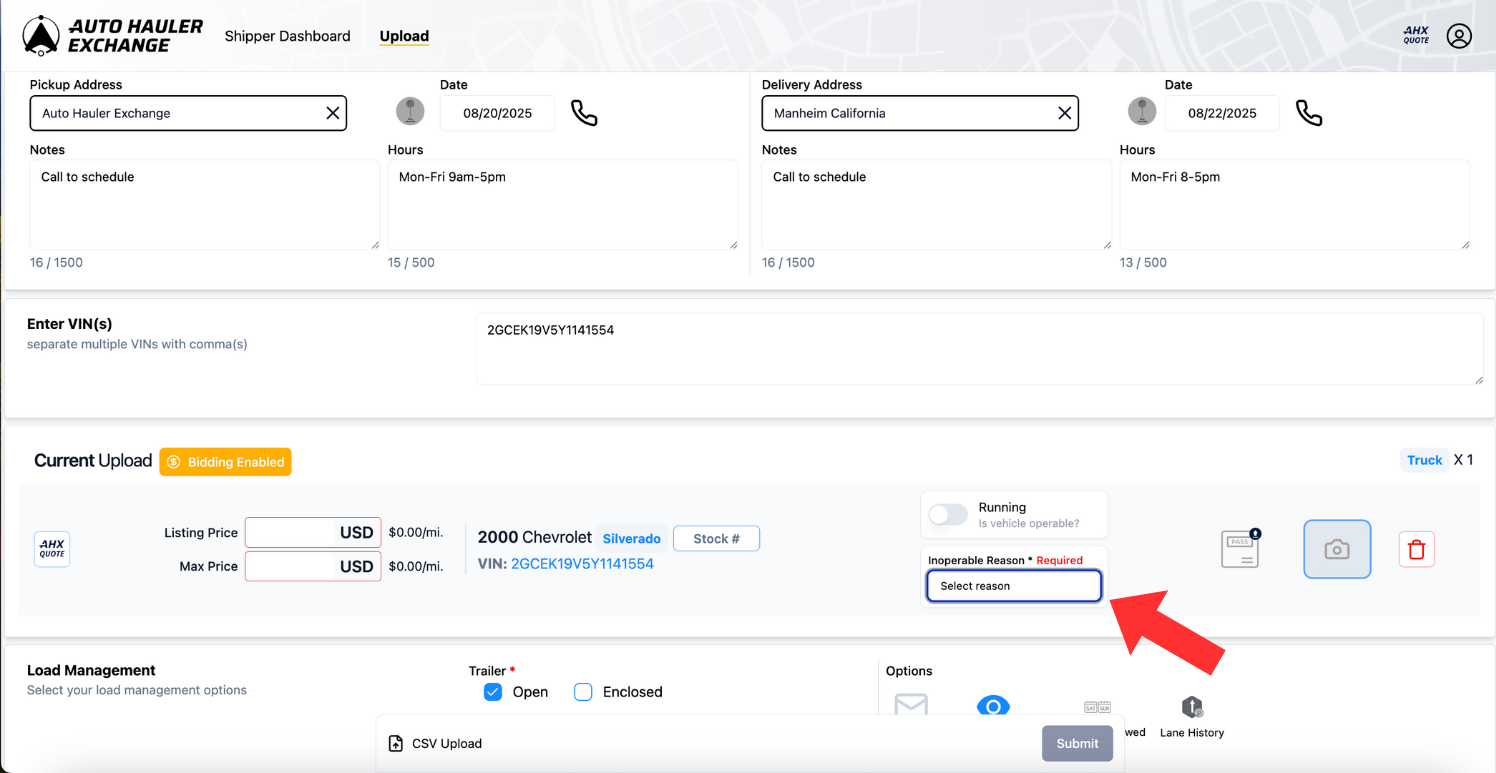To ensure smooth and efficient transportation, it’s important for shippers to accurately classify their vehicles as operable or inoperable when posting a shipment on Auto Hauler Exchange. This distinction helps carriers come properly equipped and prepared for pickup and delivery.
What is an Operable Vehicle?
An operable vehicle is one that can be driven onto and off of a transport trailer under its own power. This means:
- The engine starts
- The vehicle has available, working keys
- The vehicle can move forward and in reverse
- The brakes function properly
- The steering is functional
If your vehicle can be driven safely by a driver onto a trailer, it is considered operable.
What is an Inoperable Vehicle?
An inoperable vehicle is any vehicle that cannot be driven under its own power. Common reasons include:
- Dead battery or non-starting engine
- Damaged or missing tires
- Broken brakes or steering components
- Collision damage preventing movement
- Missing keys or locked ignition
If your vehicle needs to be winched, pushed, towed, or forklifted onto a trailer, it is considered inoperable.
Don't forget to select the "reason" when marking your vehicle as inoperable.

Please note that an inoperable vehicle typically costs more to transport than an operable one. Once marked as inoperable, the Market Estimate Tool will take this into consideration when calculating the market average.
Why This Matters to Carriers
Carriers need to know whether a vehicle is operable or inoperable so they can:
- Bring the right equipment (e.g., winch, ramps, forklift)
- Allocate enough time and labor for loading/unloading
- Ensure they can legally and safely transport the vehicle
Incorrectly labeling an inoperable vehicle as operable can result in failed pickups, delays, added transportation cost, or even shipment cancellation.
Tips for Accurate Classification
- If you’re unsure whether a vehicle will start or move, classify it as inoperable to avoid issues.
- If a vehicle has been sitting for an extended period, has a dead battery, or sustained any damage, it’s safest to consider it inoperable.
- Always include detailed notes and/or photos if the operability status is questionable.
Accurate classification ensures better service, fewer delays, and a smoother experience for both shippers and carriers.
If you need to edit a vehicle’s operability in AHX after it’s uploaded, select the “Edit” button and adjust as needed.

Need Help?
If you’re unsure how to classify your vehicle, reach out to the AHX support team before posting your shipment.
.png)
.png)
.png)

.png)

